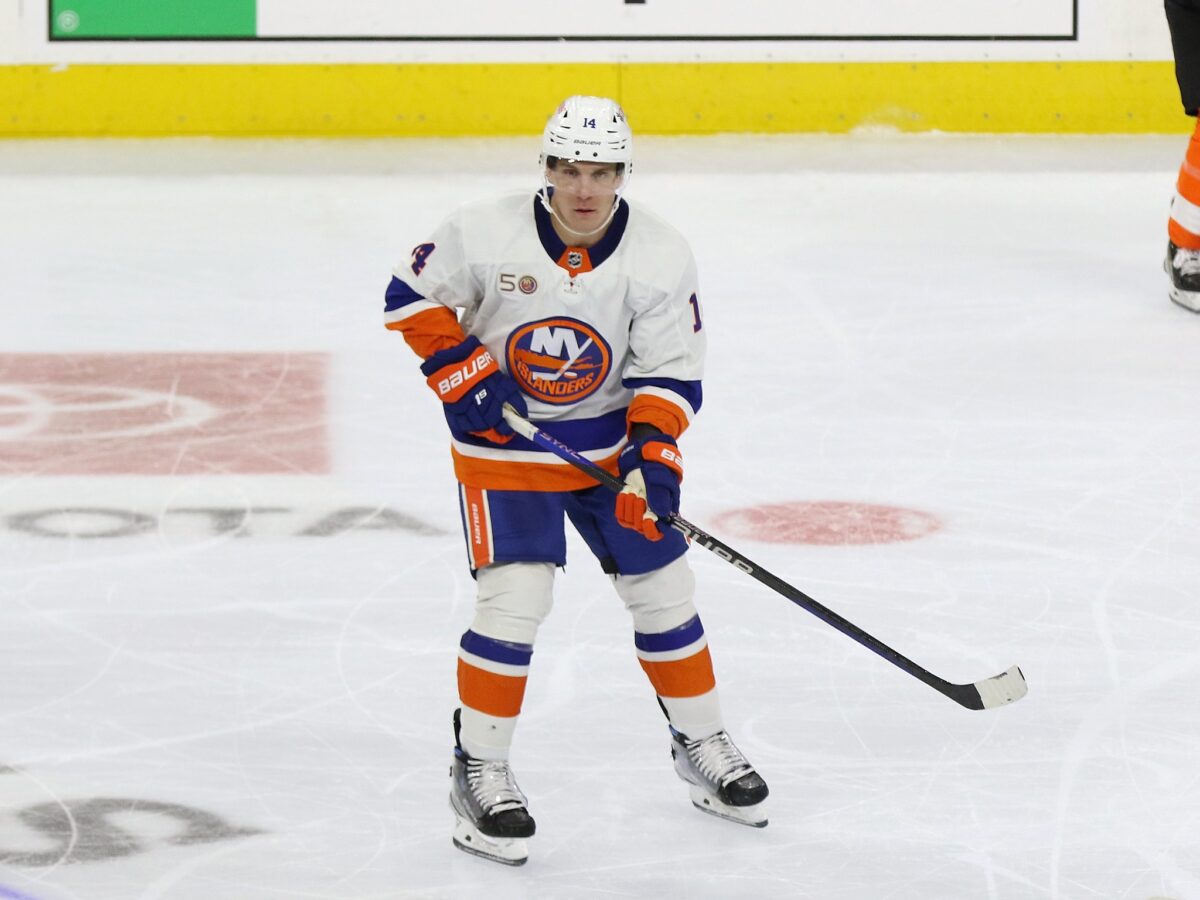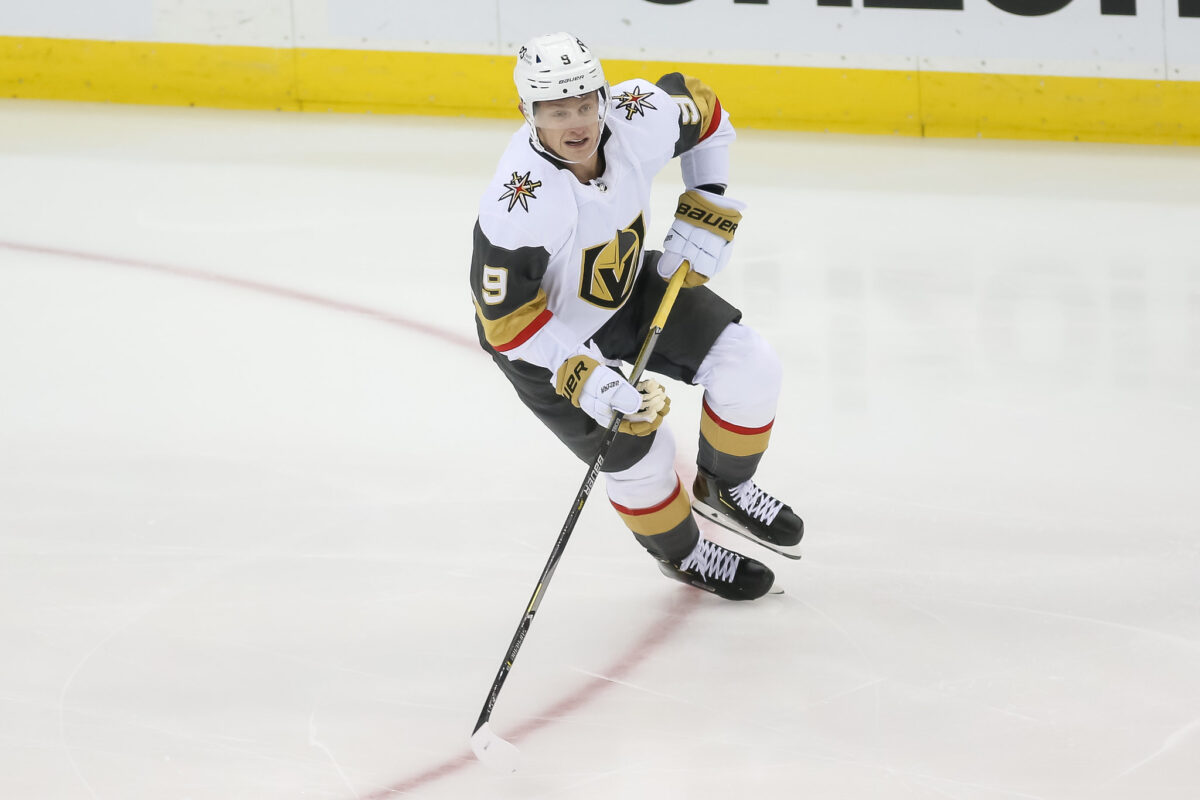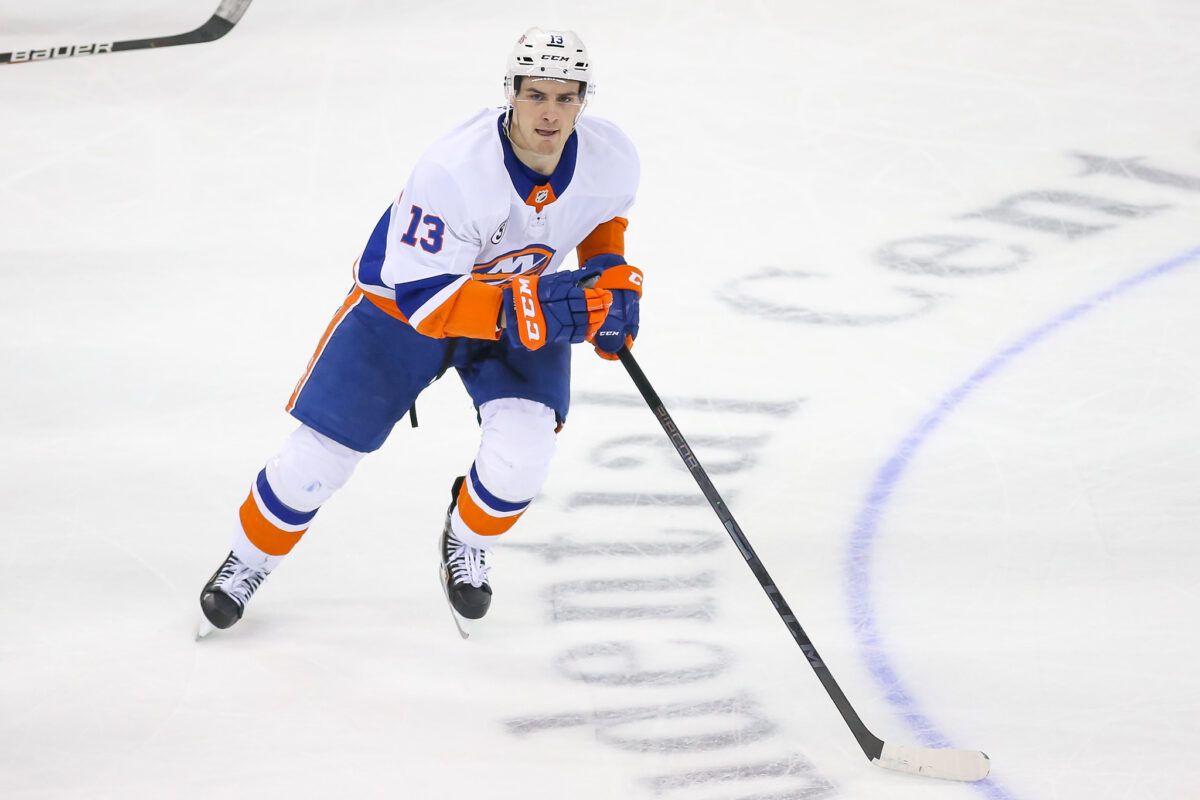The Bo Horvat trade felt like a flop. The hope for the New York Islanders was that the acquisition would give the top line an elite scorer and a star to build a championship team around. Instead, in the 30 regular-season games Horvat played since he was traded, he scored only seven goals and nine assists. In short, he was anything but the perennial 30-goal scorer that the Islanders were looking to add to the offense.
Related: New York Islanders’ Bo Horvat: What Caused His Struggles?
There’s understandable concern that Horvat, who signed an eight-year extension shortly after the trade, will remain a disappointment. If the second half of last season is a preview of what’s to come, the Islanders will be locked into a contract that will prevent them from building a contending roster. More accurately, with Horvat’s $8.5 million cap hit holding them back, they will be a team that consistently misses the playoffs.

However, there’s not only reason to be optimistic about a bounce-back from Horvat, but there’s a strong argument that he can look better than ever this year. Horvat is an elite center who can both lead the top line and re-establish himself as one of the best in the league.
Horvat Will Have A Full Season to Acclimate
It’s no secret that the trade was a tough adjustment for Horvat. He had to move mid-season across the North American continent and to another country, adapting from Vancouver to Long Island in a matter of weeks.
Along with the external, off-ice transition to a new setting, Horvat had to learn the Islanders’ system. He had to adjust on the fly to head coach Lane Lambert’s pace, which was speed-based like the one the Canucks ran but featured less puck movement in the offensive zone, limiting scoring chances for the star scorer. On top of that, he had to learn how to work with new linemates, something that became a greater issue as the injuries mounted.
Another player who went through a similar type of trade was Jack Eichel in the middle of the 2021-22 season. He was traded from the Buffalo Sabres to the Vegas Golden Knights and he struggled at first. He was recovering from an injury and only played in 34 games, scoring 14 goals and 11 assists for a Golden Knights team that missed the playoffs. The next year, he was with the team from the start and a full season allowed him to score 27 goals and 39 assists in 67 games as he became a key player on the roster. In the playoffs, Eichel played at another level, scoring six goals and 20 assists to lead the team to their first Cup title in franchise history.

This offseason, Horvat will have the time to acclimate himself to the new setting and his new team. Moreover, training camp and the start of the 2022-23 season will allow him to form a strong chemistry with the rest of the skaters on the roster. After a rough second half of last season, Horvat and the Islanders are ready to bounce back. The star skater is anticipating a return to the form he had with the Canucks in the first half of last season when he scored 31 goals and earned an All-Star nomination.
A Full Year With Barzal Will Help
In the first few games since the trade, the two skaters showed what they could do together in a full season. Mathew Barzal and Horvat led the top line for seven games and combined for five goals and seven assists in that time as the two skaters thrived alongside each other. Barzal was the passer and dynamic skater that could create scoring chances and open shots near the net while Horvat was the shooter who could find open looks on the net.

Unfortunately, Barzal suffered a lower-body injury in the Feb. 18 loss to the Boston Bruins and was forced to miss the second half of the regular season. The result was Horvat disappearing from the score sheet. In the final 23 games of the season, he scored only four goals and it was clear he missed the playmaking ability on the wing. Sure, Barzal returned for the first round and the connection wasn’t there as the two skaters combined for only three goals and an assist in the series. But in Horvat’s defense, the Islanders collectively struggled against the Carolina Hurricanes who possessed the league’s second-best defense, allowing only 2.56 goals per game. The Hurricanes blanked the offense throughout the series as the Islanders only scored 15 goals and were easily defeated in six games.
This season will be the Islanders’ first of many where they will have Barzal and Horvat playing on the top line together. The combination can give the team something they haven’t had in a long time, an elite top line. Granted, the Barzal line with Anders Lee and Jordan Eberle on his wing was potent, but the duo consisting of one of the best skaters and one of the best shooters can give the Islanders one of the league’s best lines. The two skaters, particularly Horvat returning to form, will be the main reason the offense improves this year and eclipses the 3.00 goals per game threshold for the first time since the 2017-18 season.
Horvat Has Options in Islanders Forward Unit
Aside from Barzal, Horvat will have time to find another linemate that complements his skill set. Last year was a letdown but in the second half of the season, the Islanders were constantly shuffling the lines both by design and out of necessity from the surplus of injuries. This year, Horvat can find the players to help him out if Barzal isn’t able to and, more importantly, if an instinctive scorer like Lee isn’t optimizing his skillsets.
Oliver Wahlstrom is the player to watch as he’s a young skater with a lot of upside. He’s a shooter, like Horvat but also has the ability to become a playmaker on the wing and provide scoring chances for his linemates. Wahlstrom signed a one-year deal this summer and there’s a lot of unknown surrounding the young skater. However, a breakout year will have him playing a top-six role and possibly on the top line as well.

The other skater to watch is Pierre Engvall, who moved to the left wing and formed a strong connection with Kyle Palmieri last season but could move to the top line, especially if Lee doesn’t play well alongside Horvat. While he’s similar to Lee as both skaters play the same position and are scorers first, the big difference is where they find their scoring opportunities. Engvall looks for shots in the faceoff circles and higher up in the offensive zone while the Islanders’ captain plays in the slot, near the net, and waits for the puck to find him. As a result, a line change could not only happen this season but result in a big year for Horvat.
This year will be the one where Horvat finds the skaters that he can form a strong connection with for the next eight seasons. Barzal already looks like one of them, and now he needs a skater on his other wing who similarly complements his style. Likewise, the upcoming season will allow Lambert to figure out who can play in the top six and what the ideal line combinations will be. The top priority is figuring out Horvat’s line for both next season and the foreseeable future.
An Improved Power Play Is Horvat’s Antidote
The Islanders’ power play has to improve next year, largely because it can’t be any worse than it was last year. After scoring on only 15.77 percent of their opportunities, the Islanders are expecting a return to normal and even a power play that is above league average.
The more sophisticated answer to the power play improvement (other than “it has to by default”) is that next year, it will have a direction and players in place to make it an effective unit. Barzal’s return provides the unit with a primary puck-handler on the man advantage. Likewise, Wahlstrom on the wing adds another shooter while a full season of Engvall adds another scorer to the power play. If the unit struggles with the forwards leading it, the Islanders can turn to the defensemen to operate things from the point. Specifically, Noah Dobson, who in a down year had five goals on the power play, can generate scoring chances from the blue line. Similarly, Alexander Romanov and Ryan Pulock can be shoot-first players on the man advantage.

The bottom line is that the Islanders have avenues to improve the power play and with the unit improving, even slightly, Horvat will emerge as the lethal threat in the offensive zone. He’ll find plenty of open shots near the net and in the slot if Barzal returns as the puck-handler. Likewise, the power play opening up from the point will allow him to find open ice and more opportunities off of quick passes and second-chance shots.
Before Horvat was traded by the Canucks, he had 31 goals. However, 11 of those goals came on the power play where he had space to operate and find open looks on the net. As a result, an improved unit will be paramount to Horvat’s return to prominence and even a league-average one will allow him to become an elite score again.
Additional Reasons Horvat Will Thrive Next Year
While his time with the Islanders was underwhelming, particularly as a scorer, he showed flashes of what he can add to the team. Specifically, he proved that he’s more than a scorer as he stepped up defensively and played well in all three zones. Horvat struggled offensively but, centering the top line, he helped the Islanders put together a strong second half and make the playoffs.
Even if Horvat never reaches a certain goal threshold, whether it’s 20 goals or 30 goals annually, he’ll remain a valuable part of the roster. He’ll continue to create scoring chances and be a great defensive center in the top six. The expectation is for Horvat to be a star scorer and he can still become one with the Islanders. Even if he can’t, he’ll still be a star player who makes the team better.
Horvat has all the tools to be elite and it’s just a matter of him stepping up and tapping into them. The Islanders made the blockbuster trade with the hope of landing a star. Horvat is one and is in the prime of his career at 28 years old. As a result, all the signs point to him stepping up this season and becoming the elite scorer the team needs.